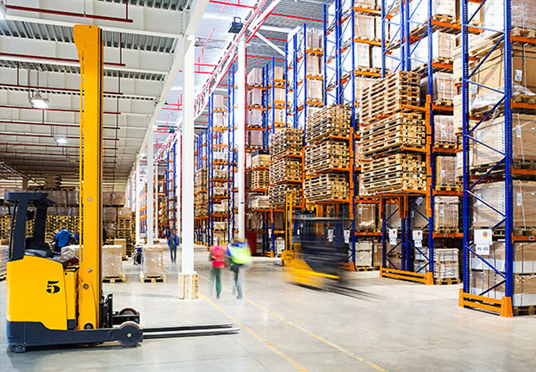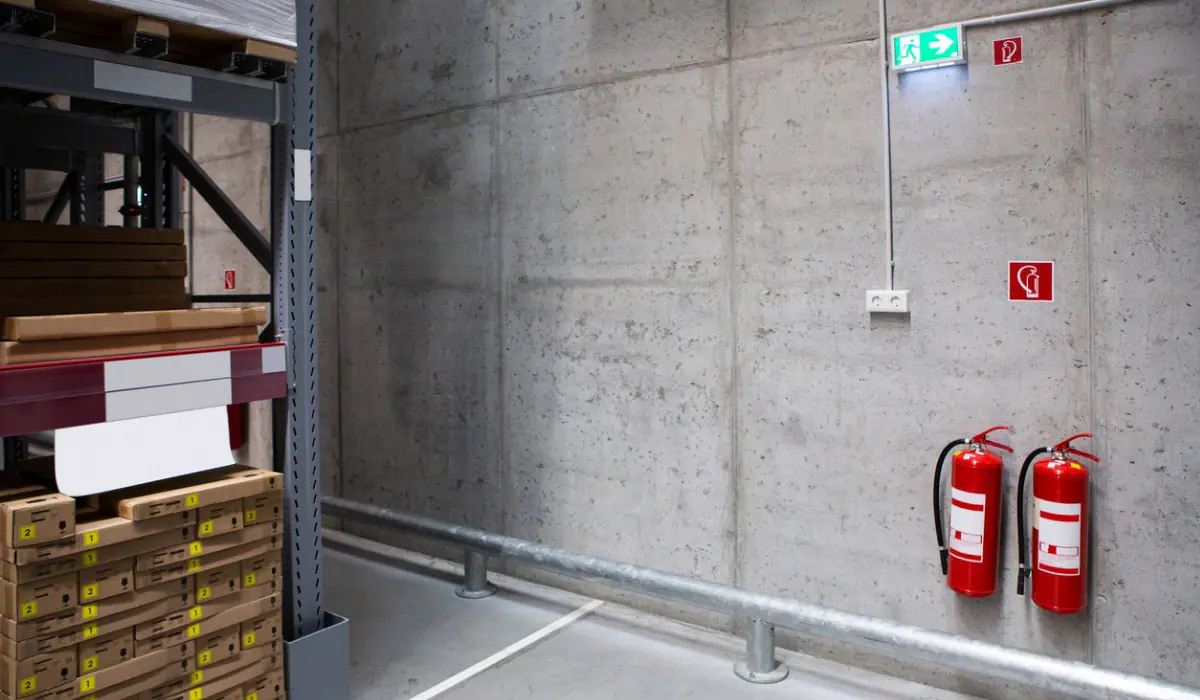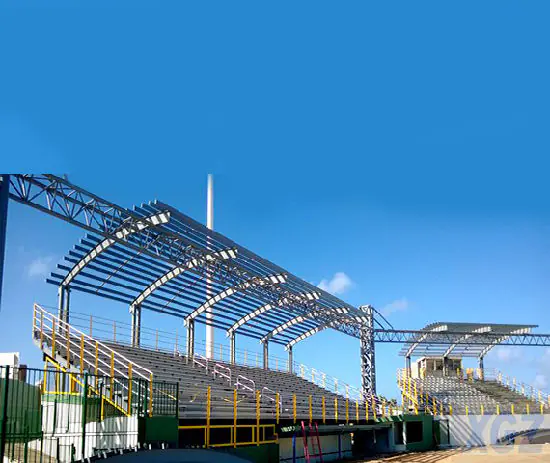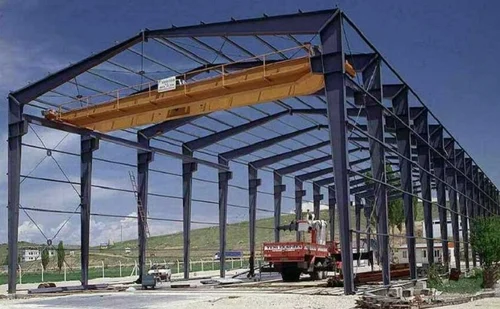Fire Prevention in Warehouse Construction: A Comprehensive Guide
Learn the importance of fire prevention in warehouse construction. Discover techniques and regulations to ensure the safety of your property and employees.
Fire prevention is a crucial aspect of modern warehouse and factory construction. This article delves into fire resistance in construction, the importance of fire prevention regulations, and effective construction techniques to prevent fires in warehouses and steel factories.
From protecting lives to minimising property damage, you will understand why investing in fire prevention systems is not only about regulatory compliance but also a strategic step for business continuity.
Learn how to create a safe working environment and increase awareness of the importance of fire prevention in the workplace.
1.What is Fire Prevention in Warehouse Construction?
Fire resistance in factory and warehouse construction refers to the ability of a building structure to maintain its integrity and limit the spread of fire for a specific period during a fire incident. This concept is critical in the design and construction of industrial facilities to ensure the safety of occupants and the protection of assets.
In the context of construction, fire resistance is measured by how long a building element can maintain its function during a fire. This includes the ability to bear structural loads, limit the spread of fire, and keep the temperature on the non-fire side below critical levels.
Key factors influencing fire resistance in factory and warehouse construction include:
- Material Selection: Use of fire-resistant building materials such as concrete, fire-protected steel, or fire-retardant treated wood.
- Structural Design: Implementation of compartmentalization to limit fire spread, including fire-resistant walls and doors.
- Active Protection Systems: Installation of automatic sprinkler systems, fire alarms, and firefighting equipment.
- Ventilation Systems: Designing ventilation systems to control smoke and heat during a fire.
- Evacuation Routes: Planning and constructing adequate and easily accessible emergency exit routes.
Fire resistance standards are typically expressed in time units, such as 30 minutes, 60 minutes, or 120 minutes. This indicates how long a building element can maintain its function under standard fire conditions.
For factories and warehouses, fire resistance is critical given the potential hazards present. Many industrial facilities store flammable materials or hazardous chemicals, which can increase the risk and intensity of fires. Therefore, fire resistance design must consider the type of activities and materials stored or processed within the facility.
Implementing fire resistance in construction involves various techniques, including:
- Coating structural steel with fire-resistant materials.
- Using reinforced concrete with adequate concrete cover.
- Installing fire-resistant walls to divide the building into smaller compartments.
- Installing fire-resistant doors and windows at critical points.
- Protecting openings such as HVAC ducts and electrical cables to prevent fire spread.
It is important to note that fire resistance is not only about preventing fires but also about providing enough time for evacuation and firefighting. In the context of factories and warehouses, this means ensuring that the structure can withstand long enough for all workers to safely exit and for firefighters to respond.
Regular evaluation and testing of fire resistance elements are essential to ensure their effectiveness. This includes routine inspections of fire doors, sprinkler systems, and other structural elements to ensure they remain in optimal condition.

2. The Importance of Fire Prevention Regulations in Factory and Warehouse Construction
Fire prevention regulations play a vital role in the construction of factories and warehouses, providing a comprehensive framework to ensure safety, security, and operational sustainability. Here is an in-depth explanation of the importance of these regulations in various aspects:
2.1 Protection of Life and Health
The primary goal of fire prevention regulations is to protect human lives. In industrial environments such as factories and warehouses, where fire risks can be very high, these regulations serve as the first line of defence for the safety of workers and visitors.
Regulations mandate the implementation of early warning systems, such as fire alarms and smoke detectors, which provide valuable time for evacuation. They also set standards for evacuation routes, including the number, width, and placement of emergency exits. This ensures that in an emergency, everyone in the building has a good chance of exiting safely.
Additionally, regulations often include requirements for employee training on evacuation procedures and the use of firefighting equipment. This enhances the overall preparedness of the workforce in facing emergency situations.
2.2 Minimization of Property Damage
Fires can cause catastrophic damage to property and business assets. Fire prevention regulations help minimize this potential damage in various ways:
- Mandating the use of fire-resistant building materials and construction techniques that enhance fire resistance.
- Requiring the installation of automatic fire suppression systems, such as sprinklers, which can control or extinguish fires before they spread.
- Setting standards for the storage of flammable and hazardous materials, reducing fire risks caused by improper handling.
- Regulating compartmentalization designs that limit the spread of fire from one area to another.
By reducing potential damage, these regulations not only protect physical assets but also help ensure long-term business continuity.
2.3 Ensuring Business Continuity
Major fires can halt business operations for extended periods, even leading to permanent closure. Fire prevention regulations help ensure business continuity by:
- Encouraging comprehensive emergency planning, including disaster recovery plans.
- Mandating protection systems that can control small fires before they become large, allowing operations to continue with minimal disruption.
- Promoting safe storage and handling practices for hazardous materials, reducing the risk of incidents that can disrupt production.
Compliance with these regulations can also affect insurance premiums, with good compliance often resulting in lower insurance costs.
2.4 Legal Compliance
Adherence to fire prevention regulations is not just about safety; it is also a legal obligation. Non-compliance can lead to serious consequences, including:
- Heavy fines and financial penalties.
- Forced closure of facilities until compliance issues are resolved.
- Legal liability in case of injuries or fatalities due to fire.
- Reputational damage that can affect relationships with customers, suppliers, and investors.
By complying with regulations, businesses not only avoid legal consequences but also demonstrate their commitment to ethical and responsible business practices.
2.5 Raising Awareness of Fire Safety and Prevention
Fire prevention regulations serve as a catalyst for raising awareness and education about fire safety throughout the organisation. They encourage:
- Regular training on fire safety procedures and the use of firefighting equipment.
- Implementation of routine inspection and maintenance protocols for fire safety systems.
- Development of a safety culture where every employee feels responsible for fire prevention.
This increased awareness not only benefits the workplace but can also influence employee behavior at home and in the community, extending the positive impact.
2.6 Creating a Safe Work Environment
Fire prevention regulations contribute to creating a safer overall work environment. This includes:
- Reducing the risk of fire-related accidents.
- Improving air quality through better hazardous material management.
- Designing more ergonomic and safe workplaces, considering evacuation routes and emergency access.
A safer work environment not only protects employees but can also enhance morale, productivity, and employee retention.
2.7 Encouraging Innovation in Safety Design and Technology
The need to meet stringent fire prevention regulations drives innovation in the construction and safety industries. This leads to the development of:
- New building materials that are more fire-resistant and environmentally friendly.
- More advanced fire detection and suppression systems.
- Technological solutions for fire safety management, such as real-time monitoring systems and predictive analytics.
These innovations not only improve safety but can also open new business opportunities and enhance operational efficiency.

3. Fire Prevention Construction Techniques in Steel Factory and Warehouse Development
In the construction of steel factories and warehouses, the implementation of fire prevention construction techniques is crucial to ensure the safety and security of the structure. Here are some effective fire prevention construction techniques:
3.1 Fire-Resistant Coating on Steel Structures
Steel, although non-combustible, can lose its structural strength when exposed to high temperatures. Fire-resistant coating on steel structures can significantly enhance fire resistance. This technique includes:
- Using intumescent paint that expands when exposed to heat, forming an insulating layer.
- Coated with fire-resistant materials such as vermiculite or perlite.
- Encapsulating steel with fire-resistant concrete or gypsum board.
3.2 Compartmentalization
Dividing a building into separate compartments can limit the spread of fire and smoke. This involves:
- Constructing fire-resistant walls between different areas of the factory or warehouse.
- Installing fire-resistant doors at access points between compartments.
- Using fire-resistant seals around pipe and cable penetrations.
3.3 Ventilation and Smoke Management Systems
Effective design of ventilation systems can help control the spread of smoke and heat during a fire. This includes:
- Installing automatic smoke extraction systems.
- Using fire-resistant dampers in HVAC systems.
- Implementing pressurization strategies to protect evacuation routes from smoke.
3.4 Selection of Construction Materials
The use of appropriate construction materials can enhance overall fire resistance:
- Using fire-resistant concrete for floors and walls.
- Selecting non-combustible insulation materials.
- Utilizing fire-resistant glass in critical areas.
3.5 Automatic Sprinkler Systems
Installing automatic sprinkler systems is one of the most effective methods for controlling fires:
- Designing sprinkler systems to cover the entire area of the factory or warehouse.
- Using special sprinklers for high-rack storage areas.
- Integrating sprinkler systems with fire alarms and detection systems.

4. Conclusion
Fire prevention in the construction of warehouses and steel factories is a crucial aspect that must not be overlooked. Through the implementation of strict regulations and appropriate construction techniques, we can significantly reduce the risk of fires and their devastating consequences.
The importance of fire prevention regulations lies not only in the protection of life and property but also in ensuring business continuity and legal compliance. These regulations promote the creation of safer work environments, enhance fire safety awareness, and even drive innovation in safety technology.
With proper prevention measures and adherence to fire safety standards, we can build steel warehouses and factories that are not only strong and efficient but also safe from fire threats. Collaboration between the government, developers, and workers in understanding and applying fire regulations will be key to achieving this goal. Ultimately, investing in fire prevention will yield long-term benefits in the form of better safety, stronger asset protection, and more assured operational continuity.



Post Comment